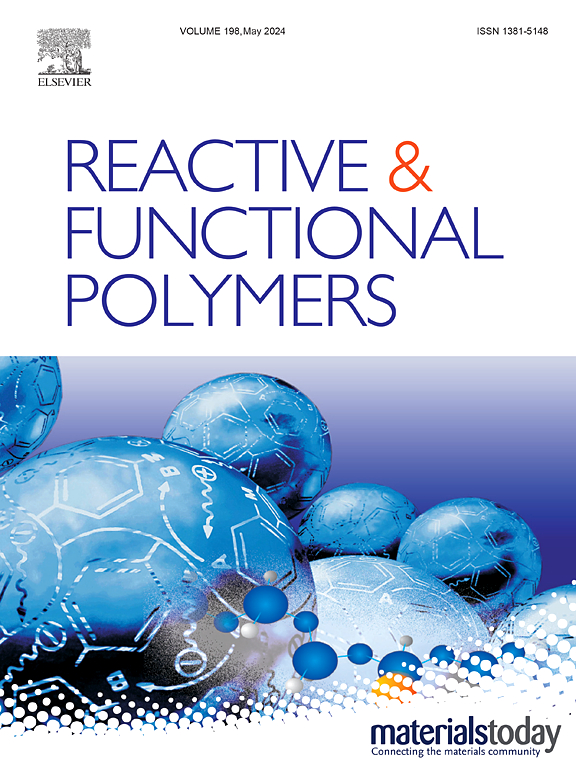TPFPP@PMMA core-shell polymer modified flame retardant separator achieved by aqueous technique for high-voltage lithium metal batteries
IF 4.5
3区 工程技术
Q1 CHEMISTRY, APPLIED
引用次数: 0
Abstract
The safety of lithium metal batteries (LMBs) is a critical barrier to their further development towards achieving higher energy densities exceeding 400 Wh kg−1. Although the incorporation of flame-retardant additives into the liquid electrolyte can enhance the safety of LMBs, it often compromises electrochemical performance. To achieve a balance, a flame-retardant separator with thermally responsive properties has been developed by coating a core-shell flame-retardant polymer (poly(methyl methacrylate) (PMMA) as the shell and tris (pentafluorophenyl) phosphine (TPFPP) as the core) onto a polyethylene (PE) separator using an aqueous technique. Compared to the original PE separator, the TPFPP@PMMA flame-retardant separator exhibits superior mechanical strength and electrolyte wettability, along with significantly improved flame retardancy and thermal stability. Due to the excellent compatibility of PMMA polymer with lithium anode, a stable cycle life of over 500 hours for the Li||Li symmetrical coin cell has been achieved. The capacity retention of the Li||LiNi0.8Co0.1Mn0.1O2 battery is higher than that of the PE separator (80.0% vs. 65.8%) after 100 cycles between 3.0 V and 4.35 V, ascribed to the formation of a stable and robust cathode electrolyte interface (CEI) film, primarily composed of rich LiF and poor Li2CO3 on the cathode surface, induced by the PT/PE separator. Thus, the developed flame-retardant separator offers new prospects to the revival of high-energy-density LMBs.

TPFPP@PMMA高压锂金属电池用水技术制备的核壳聚合物改性阻燃分离器
锂金属电池(lmb)的安全性是其进一步发展以实现超过400 Wh kg−1的更高能量密度的关键障碍。虽然在液体电解质中加入阻燃添加剂可以提高lmb的安全性,但它往往会损害电化学性能。为了达到平衡,我们开发了一种具有热响应性能的阻燃分离器,该阻燃分离器采用水相技术将一种核-壳型阻燃聚合物(聚甲基丙烯酸甲酯(PMMA)为外壳,三(五氟苯基)膦(TPFPP)为核心)涂覆在聚乙烯(PE)分离器上。与原来的PE隔膜相比,TPFPP@PMMA阻燃隔膜具有优越的机械强度和电解质润湿性,同时阻燃性和热稳定性也有显著提高。由于PMMA聚合物与锂阳极的良好相容性,Li||Li对称硬币电池的稳定循环寿命超过500小时。在3.0 V ~ 4.35 V范围内循环100次后,Li||LiNi0.8Co0.1Mn0.1O2电池的容量保持率高于PE隔板(80.0% vs. 65.8%),这是由于PT/PE隔板诱导阴极表面形成了一层稳定而坚固的阴极电解质界面(CEI)膜,该膜主要由富LiF和贫Li2CO3组成。因此,所研制的阻燃分离器为高能量密度lmb的再生提供了新的前景。
本文章由计算机程序翻译,如有差异,请以英文原文为准。
求助全文
约1分钟内获得全文
求助全文
来源期刊

Reactive & Functional Polymers
工程技术-高分子科学
CiteScore
8.90
自引率
5.90%
发文量
259
审稿时长
27 days
期刊介绍:
Reactive & Functional Polymers provides a forum to disseminate original ideas, concepts and developments in the science and technology of polymers with functional groups, which impart specific chemical reactivity or physical, chemical, structural, biological, and pharmacological functionality. The scope covers organic polymers, acting for instance as reagents, catalysts, templates, ion-exchangers, selective sorbents, chelating or antimicrobial agents, drug carriers, sensors, membranes, and hydrogels. This also includes reactive cross-linkable prepolymers and high-performance thermosetting polymers, natural or degradable polymers, conducting polymers, and porous polymers.
Original research articles must contain thorough molecular and material characterization data on synthesis of the above polymers in combination with their applications. Applications include but are not limited to catalysis, water or effluent treatment, separations and recovery, electronics and information storage, energy conversion, encapsulation, or adhesion.
 求助内容:
求助内容: 应助结果提醒方式:
应助结果提醒方式:


